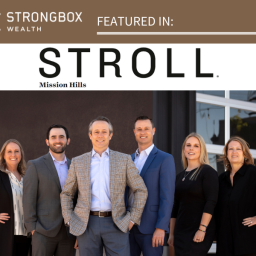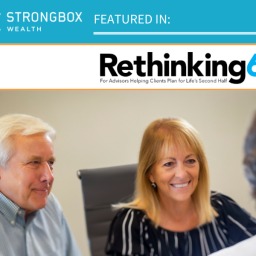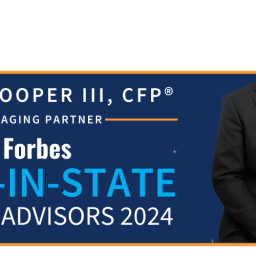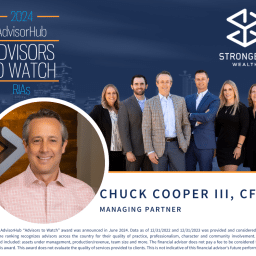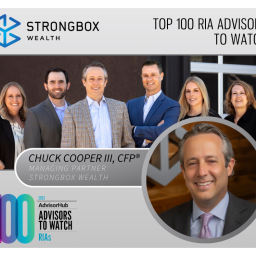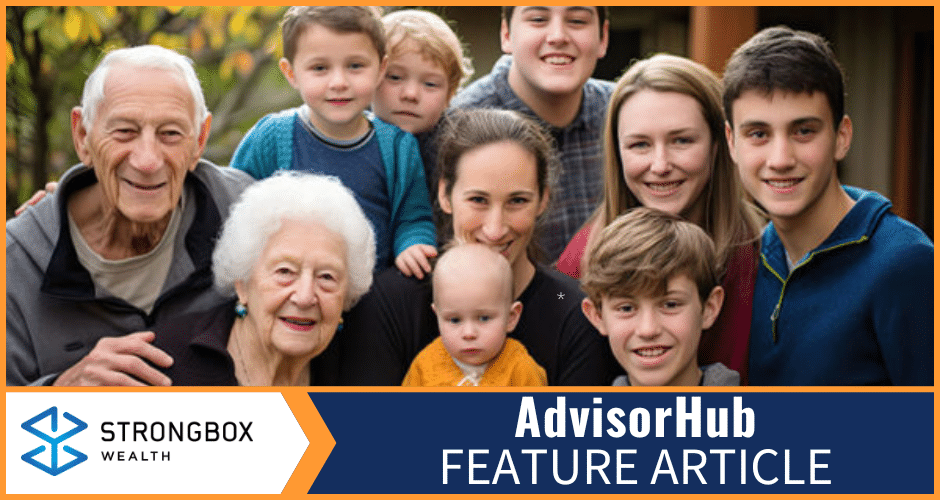
In the competitive financial advisory landscape and ongoing quest for new clients, advisors often miss an obvious opportunity – the children and grandchildren lying within their existing clientele. If an advisor can serve multiple generations of a client’s family, he or she can avoid the dreaded high attrition rate that befalls most advisory firms when a family patriarch or matriarch dies and leaves the estate to their heirs. Whether a surviving spouse or children, heirs most often leave the advisor who managed the deceased’s financial affairs when a preexisting relationship had not been formed. This advisor oversight highlights a natural strategy to engage in multigenerational wealth planning.
Cerulli Associates highlights a startling statistic that over 70% of heirs are likely to switch financial advisors following the inheritance of their parents’ wealth. This trend poses a significant challenge for advisory firms, as nearly $70 trillion in wealth is expected to transition to the next generations and charities by 2042. Understanding and addressing this dynamic is crucial for any wealth advisory firm aiming to sustain and grow its clientele base.
In keeping with our commitment to deep and lasting relationships, our client roster includes numerous third- and fourth-generation families. Over the years, we have refined an approach to building intentional connections around each family’s shared values. This integrates the financial vision of our clients’ heirs with those of the family as a whole, and it increases our ability to retain family assets over generations.
Our approach is proactive and adaptive. Because we recognize the needs and aspirations of each family member, we can introduce younger generations to the financial planning process, fostering a sense of cohesion and shared purpose. In turn, their parents take comfort in knowing we are on hand to provide intergenerational continuity. This approach ensures that our client relationships last, and it empowers heirs to manage their inheritances with confidence.
The Impact of the SECURE Act on Multigenerational IRA Planning
The SECURE Act (Setting Every Community Up for Retirement Enhancement) introduced new challenges and considerations for IRA inheritances. Non-spousal beneficiaries previously enjoyed the ability to stretch IRA distributions over their lifetimes, benefiting from extended tax-deferred growth. The Act now limits this stretch to 10 years for most beneficiaries (excluding minor children or disabled or chronically ill individuals), prompting a reevaluation of estate and tax planning strategies for both the lead client and subsequent generations. Think of the problem created when high-income adult children, already in higher marginal tax brackets than their parents, inherit a parent’s IRA and are then forced to exacerbate their tax circumstance by realizing the value of that inherited IRA as taxable income over the next 10 years.
This legislative change underscores the importance of proactive planning. For those inheriting traditional IRAs, the condensed distribution timeline could lead to significant tax liabilities, especially for heirs in higher tax brackets. To mitigate this, we may advocate for strategic conversion of the lead generation’s traditional IRAs to Roth IRAs. Although this strategy creates taxable income for the IRA owner at the time of conversion, it ensures that subsequent Roth withdrawals are tax-free, not subject to Required Minimum Distributions, albeit still within the 10-year distribution rule for non-spousal heirs.
Roth IRAs have a secondary benefit for older clients. Roth IRA distributions are tax-free and not factored into the calculation used to levy the Medicare surcharge, known as the Medicare Income-Related Monthly Adjustment Amount (IRMAA). For higher-income IRA owners or their ultimate beneficiaries, managing client income with Medicare premium thresholds in mind not only reduces the original IRA owner’s future required minimum distributions (RMDs) but their heirs as well. Ideally, Roth conversion planning occurs before age 65 when Medicare kicks in. However, there are countless times when we have recommended a Roth conversion before age 73 when RMDs commence. Ultimately a Roth conversion can benefit the living lead generation in future years through lower Medicare premiums and less taxable income or their nonspousal beneficiaries by inheriting a tax-free asset to be depleted over the 10-year withdrawal requirement.
Additional Strategies for Enhancing Multigenerational Wealth Management
By their very nature, 529 plans are another vehicle to use in serving multi-generational clients, allowing grandparents and parents to contribute to a child’s college or private K-12 education while enjoying tax-free growth. We use this strategy not only to support the educational funding needs of our clients’ families but also to introduce the younger generation account beneficiaries to the principles of financial planning and responsibility.
Similarly, the incorporation of Donor Advised Funds (DAFs) into our clients’ financial strategies serves multiple objectives. These funds allow for tax-efficient charitable giving, often offsetting same-year taxable income otherwise created by a Roth conversion, while also serving as a practical tool for engaging younger family members in discussions about family values and philanthropy.
Perhaps one of the most innovative aspects of our multigenerational planning approach is coaching around establishing a Family Advisory Board. This board acts as a collective forum for discussing and making donor-advised fund grants, ensuring that members across all living generations have an inclusive say in supporting the family’s values and goals. This collaborative model instills a sense of responsibility and stewardship in younger members, serving a dual purpose in preparing them to manage and effectively preserve their wealth.
The Benefits of Continuity and Collaboration
The advantages of multigenerational planning extend beyond financial gains. They foster a sense of unity and shared purpose among family members, ensuring that the legacy of the original clients is not only preserved but also enhanced. Our role as advisors goes beyond managing assets; we act as educators, mediators, and partners in our clients’ journeys through life’s milestones.
As one recent example of multigeneration engagement, we have a long-retired and widowed client with a multi-million dollar portfolio who felt reluctant to enlist her three adult children in her financial affairs. Yet, she also worries about losing her mental capacity and how her children will ultimately manage their inheritance. I suggested a group meeting with her sons where I could moderate a benign conversation about what happens if their mom becomes incapacitated and how the durable power of attorney (DPOA) role interrelates with her financial affairs. We had a constructive dialogue around plans and the mom was greatly relieved to have finally demystified the money topic. Interestingly, one of her sons stayed behind after our meeting. He said the introduction to StrongBox Wealth made him realize how late he is on his financial planning and asked us if we would consolidate his former employer 401ks by moving them to an IRA under our management. Ultimately, he will inherit a third of his mom’s portfolio and we expect to retain those assets because he has become a client through the process of multigenerational engagement.
This collaborative model has proven effective, not only in retaining clients across generations but also in attracting new ones. Families appreciate the depth of our engagement and the personalized strategies we develop to meet their unique needs. This has led to a virtuous cycle of referrals, further expanding our client base and reinforcing our reputational proficiency in multigenerational wealth management.
Chuck Cooper III, CFP®
Published June 10th, 2024 by AdvisorHub


